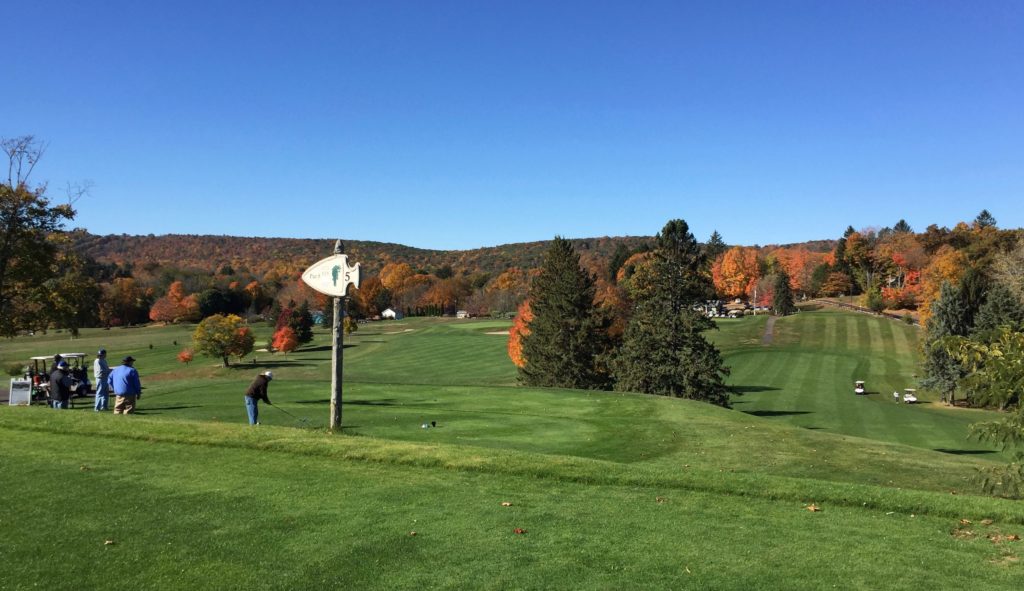Do you have any idea how many golf courses there are in this world? Or how much land they use – especially when compared to other recreational sports fields? As golfers, perhaps we could use a little perspective.

I tell ya, golf courses and cemeteries are the biggest wastes of prime real estate!
– Rodney Dangerfield (as Al Czervik) in Caddyshack
Is it bad when one of the most beloved characters in golf movie history thinks golf courses are a waste of space? We love Al Czervik – we all do. But the fact remains he wanted to buy Bushwood and replace the course with condos. Granted, his motivation was purely for profit, but nonetheless he wished there were less golf courses in the world. And so do many other people.
Some real estate moguls see golf courses as an encroachment on their piggybank; Some environmentalists view golf courses as an encroachment on the natural habitat of wildlife; and some non-golfers see golf courses as just a waste of space that could have been put to better use.
Whatever your viewpoint might be, one can’t deny golf courses take up a good amount of space – to the tune of 2.24 million acres1 in the US alone. That’s a lot of real estate. Another mind-boggling stat is just how many golf courses there are in this country: More than 16,000. Let me put that in perspective for you: There are only 12,800 McDonald’s restaurants in the US. This means when you’re driving down the road craving a BigMac, you’re more likely to find a golf course before a Mickey D’s. I’ll give you a moment to digest that.
It’s also true golf takes up more space than other recreational sports. Baseball, softball, soccer and football fields take up 1 to 3 acres2 each while basketball and tennis courts much less still (0.1 – 0.6 acres respectively). This is a far cry from the average amount of acreage needed for a golf course (140 acres).
Even a golf driving range (15 acres2) takes up more than each of the non-golf fields combined! So from a space management standpoint, you could have youth baseball, softball, soccer and football games all going on at the same time in one park (and a tennis and basketball court to boot). Or, you could have one facility to practice (not even really play) golf.
Now my point in telling you all this is to give you the perspective of the non-golfer. If you’re a non-golfer and read those stats, you’d think; “Wow, that’s a lot of space for one sport that not everybody plays.” And based on that, you can begin to see why so many people have a hard time with golf and the land it requires (see comedian George Carlin’s famous take on this here). Furthermore, many courses are private – meaning vast tracts of land are set aside for only a very select few to enjoy.
As golfers, we may have never even thought about how many golf courses there are in the world (34,000). For us, there can never be too many courses. But when we look at the stats, it’s kinda crazy. That’s a lot of land, water, fertilizer, pesticides, etc. just so we golfers can play our game. Sure golf is doing more to lessen its environmental impact these days, but that’s just scratching the surface. So this brings me back to the original question: Are golf courses a waste of space?
For the avid golfer, they certainly aren’t wasting space. But the non-golfers have valid points – especially on the topic of if there are too many courses. This is a real concern and one the golf industry (at this point at least) might have a hard time rebutting. I’ve posted about there being too many courses before and tend to agree the herd could use a little thinning – especially in this post-Tiger era when golf participation is on the decline.
However, if a course is operating at sustainable levels and putting forth a decent product (they don’t have to be lush green mind you), then in my opinion, it’s hard to argue there would ever be a better use for that land.
Notes:
1See page 3 of the Golf Course Environmental Profile: Property Summary.
2See the appendix of the Reusing Cleaned Up Superfund Sites report.